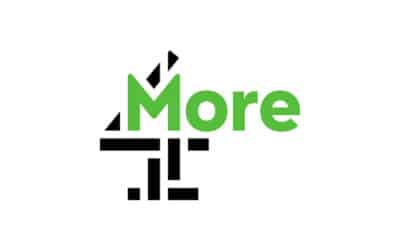It’s fair to say that 2023 wasn’t a vintage year for the wider M&A market due to the unstable economic and political backdrop through the year, writes Ben Taylor, director at KPMG.
The volume of TMT deals declined by almost a quarter (24%) year-on-year to the lowest level seen in five years, as high cost of capital and lower growth rates dampened M&A appetite.
Agencies were certainly not immune as tempered media budgets often hindered growth with clients pushing back projects. None-the-less, some deals were completed ranging in size with examples including the likes of Denstu’s acquisition of Tag, BrandTech’s acquisition of Jellyfish, Falfurrias acquisition of Brainlabs and ICP’s (backed by North Edge) acquisition of their first bolt-on (team6ix).
Across the board, we witnessed heightened focus on quality of revenues and earnings, with buyers shifting their preference towards recurring, stable and high-margin businesses, signalling a departure from the era of relying solely on rapid growth.
Whilst political uncertainty may well feature in 2024, UK dealmakers are cautiously optimistic for economic stability, aided by falling inflation and interest rates. Furthermore, Private Equity has seen longstanding success with agency ‘Buy and Builds’ (e.g., Bridgepoint and IDHL, Livingbridge and BrainLabs), which still have significant dry power that they need to deploy for both platform investments and bolt-ons.
As such, we expect an increase in activity from 2023. Charterhouse’s recent agreement to acquire a majority stake in digital-focused sports agency Two Circles, highlights just that. Strategic parties (certainly the large agency hold cos) continue to exhibit more caution in acquisitions, once again looking for margin accretive deals or more specialised propositions that broadens capability.
Demand for tech-enabled solutions, including data analytics, automation tools, and digital engineering capabilities remains high (for both strategic and financial investors). Agencies that have data-driven marketing strategies and integrating technology into core services are viewed more favourably, with the ever-growing importance of data for measurability and performance. Adding and improving social capabilities is also on the radar for many strategics, as social becomes an increasingly core part of marketing strategies.
Of course, whilst the market may be showing signs of revitalisation, getting deals across the line still requires a healthy dose of grit and determination! As such, we highlight some valuation drivers that all buyers assess alongside items that can often help reduce execution risk for those agencies who are thinking about M&A.
Key valuation drivers:
- Profitability – The assessment of whether an acquisition is margin accretive plays a pivotal role, influencing the valuation and potential participation of strategic parties as well as private equity. Strategics will often assess this post inclusion of a management charge
- Revenue streams – Robust recurring revenue streams are highly valued, with buyers favouring a higher percentage of retained revenue over one-off projects
- Client portfolio – Buyers grow wary if a single customer contributes over 10% of a company’s revenue, increasing the risk profile of the investment – diversification is key
- Technology capabilities – The presence of quality data analytics, automation tools, and digital engineering capabilities enhances a company’s attractiveness in the market
- Market positioning – Verticalised specialists with a niche focus are positioned favourably
- Creative talent – A skilled and innovative workforce is an asset, contributing to the overall strength and appeal of the business
Items that can reduce execution risk:
- Clear deal expectations – Clearly defining deal expectations in terms of structure and valuation is crucial for a successful transaction. Buyers want to clearly understand why shareholders are undergoing a transaction and the expectation of senior management involvement going forward
- Financial preparation – Ensuring financial information is readily available, and a robust in-house (or external) finance function is in place to facilitate the M&A process – ensuring significant preparation time before launching a process
- Management team – A strong and broad management team helps mitigate ‘key man risk,’ instilling confidence in potential investors
- Timing of a process – It’s highly beneficial to show strong trading before entering and throughout a process to showcase strength on the business and ensuring KPI’s such as growth, profitability and client retention are favourable
- Identify M&A advisors with agency specialism – Choosing specialised M&A advisors with a deep understanding of the agency business model and knowledge of the right buyer audience helps position the business in the best way possible, generate competitive tension and maximise the likeliness of success
Whilst challenges persist, agencies remain an attractive investment opportunity for both strategic and financial investors. With clear strategic direction, upfront preparation and focus on key drivers, agency owners will be able to successfully navigate transactions.
KPMG were headline partners and event host for Prolific North’s recent From Growth to Gold: Scaling and Selling your agency event. Catch up with all of the event highlights here.










